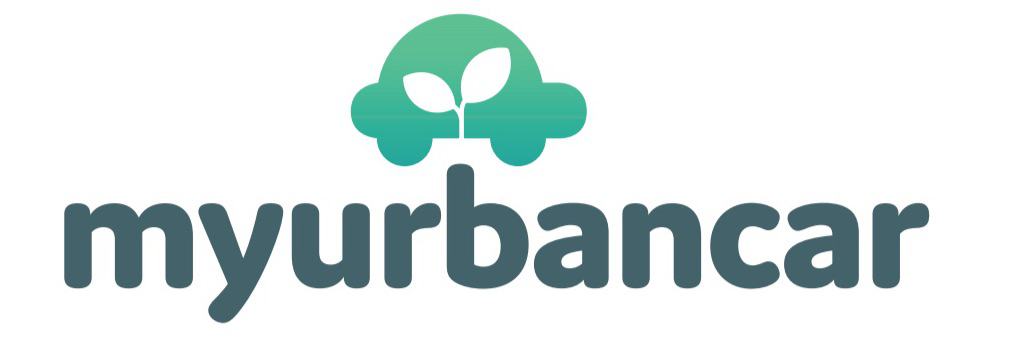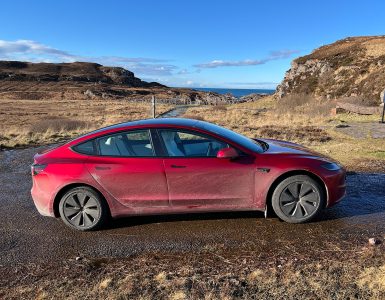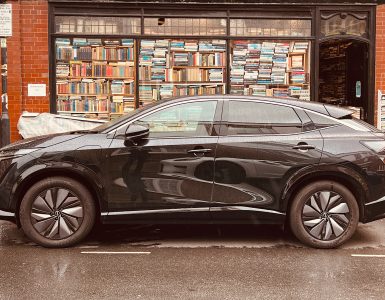September was the best month for UK electric car sales since December 2020, when we last did a sales report. December 2020 ended with a bit of a bang for pure EV or BEV sales. By comparison 2021 up to September was a disappointing step backwards so September is a much needed boost.
| UK BEV sales share | Sept 2021 | Dec 2020 |
|---|---|---|
| Month sales | 32,721 | 21,914 |
| Month share | 15.2% | 16.5% |
| YTD sales | 125,141 Q3 | 108,205 Q4 |
| YTD share | 9.5% Q3 | 6.6% Q4 |
So lets run through the highlights of September for EV’s
- Firstly September is a normal and big sales month. Traditionally highest EV sales share has been in small months or during pandemic lockdowns.
- September is a normal big month except that the 2021 semiconductor supply crisis is restricting supply of all new cars so a good EV performance is a fresh step. However overall car sale were 34.4% down on 2019 (itself a record low) There has been little sign to date that carmakers have diverted their limited number of semiconductors to EVs, in fact there is some evidence to the contrary do this is a good EV performance
- Like December 2020 an EV was the best selling car of any type in September. The Tesla Model 3 with 6,879 sales compared to 5,798 in December 2020. Both are “end of quarter month when Tesla deliver most of their cars. Tesla is supply constrained until the new Berlin Giga factory goes online probably in November and ramps up production over 2022. Tesla ended September with every Model 3 sold and nothing left in UK inventory.
- Although total Tesla sales were 7,027 (only Model 3 is available in UK) total EV sales were an excellent 32,721. This was so good it got close to beating the EV sales in the whole of 2019 which were 37,850!
- This matters. Tesla has often provided the backbone to UK electric car sales since September 2021. The fact that Tesla can sell all the cars they have and other carmakers still delivered 78.5% of EVs in September means the the growth is broader based, more brands have good desirable EV’s to sell and most importantly they are delivering to the UK in increasing volumes.
- Helped by the September boost, EV sales for the year up to Q3 have now passed the whole of 2020 (see YTD table)
- It seems EV sales are finally starting to recover from the decision of the UK Government in spring 2021 to withdraw grants from the biggest selling and longer range electric cars altogether and shrinking them for EV’s under £35,000. This has wasted a lot of time in the EV transition.
- EV sales for the year to date are finally close to crossing the 10% of sales threshold at 9.5% in September compared to 5.6% share in the first 9 months of 2020. Worthy of a slow hand clap – it is progress but much much too slow and falling behind other countries in Europe.
- Have pure EV sales now permanently passed diesel sales? Too early to be sure but if diesel does retake the lead it probably won’t manage it for more than a couple of sales months before finally sliding under the water with a final hiss of oily steam and smoke.

What happened to the cars that weren’t EV?
- Diesel sales thankfully are now collapsing. Including MHEV diesels market share is down to 10.3% compared to 18.4% in September 2020 and 19.7% in December 2020. Pure non MHEV diesel share is down to 5% or just 1 in 20 car sales. If you’re in the business of selling polluting diesels your market has fallen from from 61,480 in Sept 2020 cars to… 22,016 this year. Excellent news for our health.
2021 Diesel share for year to date are still too high with 202,776 sold compared to 253,444 in 2020 (although 2020 was a big fall on 2019.) - Petrol car sales were insulated from growing EV sales partly by the collapse of diesel sales. While petrol is still dominant at 56.7% of sales in September this is a fall from 63.1% in September last yr. Year to date petrol sales are 781,374 down from 796,521 despite showrooms being far less affected by lockdowns this year.
- Apart from EV’s Plugin hybrids were the only other growing segment in September with a 6.4% share compared to 3.8% a year earlier. Year to date PHEVs are taking a 6.6% share compared to 3.4% in 2020.
- Hybrids powered entirely by petrol and diesel lost sales but increased sales share from 3.8% in 2020 to 11.6% in September 2021. Hybrids took 9.1% of sales compared to 6.7% in the first 9 months a year earlier. Hopefully some owners unable to go anywhere during the fuel shortage will have figured out the reality behind the “self charging hybrid” lie
Glossary
Diesel – standard cars powered by diesel engines and are slowly being replaced by diesel MHEV’s
Diesel MHEV – also known as Mild Hybrids these are simply a new diesel cars with the same engines and a slightly (around 2-3%) more efficient starter motor. Although marketed as hybrids they really are not real hybrids as they can’t travel an inch or even a cm on electric power. We include diesel MHEV’s our diesel totals on our charts
Petrol – standard cars powered by petrol engines and are slowly being replaced by petrol MHEVs
Petrol MHEV – also known as Mild Hybrids these are simply a new petrol car with the same engines and a slightly (around 2-3%) more efficient starter motor. Although marketed as hybrids they really are not real hybrids as they can’t travel an inch or even a cm on electric power
BEV Battery Electric Vehicles. These pure electric vehicles run without any petrol or diesel engine and are set to replace all piston engine cars & vans. They are cheaper to run and maintain and reduce CO2 by over 60%+ compared to fossil fuel powered cars. Charge times are much faster than on PHEVs and on long trips usually involve brief stops of 15 – 35 mins. The record distance travelled in 24 hrs in a Tesla Model 3 including all charging time is over 1700 miles so high mileage is not an issue on the right BEV that can charge at 100kW or quicker
PHEV Plugin Hybrid Vehicles – these cars can run on petrol or diesel or electric power. They can be more efficient than pure petrol or diesel cars but are hampered on using EV mode because most have small batteries that are very slow to charge and then only manage 15 to 30 miles electric range. There are now a few PHEVs than can DC charge quickly and have range of 40-50 miles.
HEV Hybrid Electric Vehicles – these are personified by the standard Toyota Prius. All the power comes from a piston engine (you can’t plug them in and they do not “self charge” but like a BEV a hybrid uses electric motors to drive at low speed or help boost the petrol engine at higher speeds and harvests energy from braking to boost efficiency. As a result Prius sized hybrids can be more efficient in urban driving than other piston cars.
Backdrop – December 2020 sales compared to (December 2019)
- EV 16.5% (3.3%)
This was a stonking finish for UK EV sales with 2 EVs in the top 5 selling cars in December..1st The Tesla Model3 with 5,798 deliveries and 4th VW ID.3 3,188. Overall BEV sales were above expectations at 21.914 up from 4,491 a year earlier. The Tesla delivery pattern is tied strongly to the end of each quarter so total December UK sales of all Models of 6,400 are better compared with September 2020 end of quarter -5,823 rather than the October figure of 511! - Plugin EV + PHEV 23.4% (6.6%)
- Plugin EV + PHEV + HEV hybrid 29.4% (10.0%)
- Diesel inc MHEV 16.2% 24.9%
This was another big move down for diesel sales. Diesel sales in 2020 have tended to recover to a sales share of close to 20% in “normal months” when car showrooms are open, indeed the share for the whole of 2020 was 19.7% down from 24.9% in 2019. However with stringent COVID restrictions now planned until at least the end of March diesel sales will almost certainly remain depressed. Indeed the question how many people will still want new diesels by the time “normal” months arrive. Diesel options are being pulled from individual models and some whole brands on an almost monthly basis while a raft of new SUV EV’s due in early 2021 (including the VW ID.4 and its Skoda Enyaq sibling) are likely to cut a swathe through the diesel stronghold cars like the Audi Q3, Q5, BMW X1 & X3 along with Mercedes and Land Rover equivalents - Petrol inc MHEV 54.4% (65.1%)


2020 UK Annual sales (2019, 2018)
- EV 6.6% (1.6%, 0.7%)
Bumper EV deliveries in December took the annual total to 108k (37.8k, 15.5k) about 10,000 more than anticipated for the final month. - Plugin EV + PHEV 10.7% (3.1%, 2.5%)
PHEV sales alone rose in share to 4.1% (1.5%) but pure EVs are now the dominant story leaving the “stepping stone” PHEV technology in its wake. - Plugin+hybrid 17.5% (7.4%, 4%)
Hybrid cars remain a force with sales just above pure EVs at 110,117 versus 108,205. The difference is EV sales grew by 184% while Hybrid sales grew.. 12.1%. - Diesel inc MHEV 19.7% (26.7%, 31.7%)
Diesel sales managed to cling to close to 20% of sales closing just under. the small drop in market share doesn’t tell the whole story however. - In 2018 diesel sales inc MHEV were 750,165 v 15,510 EVs or 48.3 to 1 diesel to EV. By 2019 615,705 diesel were sold v 37,850 EVs so down to 16.2 to 1. In 2020 diesel sales collapsed to 322,725 diesels v 108,205 or 2.9 diesel sales to 1 EV. In Dec 2020 1.01 EVs sold per diesel!
- Sales were restricted in December while EV sales have tended to be immune so the true final crossover between diesel and EV sales probably hasn’t happened but can be at some point in 2020. EV sales may remain above diesel in Jan to March or April, but at some point the 2 will crossed over probably when both are in the 12-15% range. We are counting diesel MHEVs in these numbers.. if you don’t then diesel sales are already were already down to 16.0% share for 2020 and 11.9% share in December as MHEV’s (see definition above) take over from the non MHEV models.
- Petrol inc MHEV 62.7% (65.9%, 62.3%)
Petrol sales seem to have been immune the rise in plugin vehicle sales. We think rising EV and Plugin share will still mainly come out of the diesel sales column in 2021 (partly because diesels are paradoxically mainly sold by premium brands in cars that EVs can already compete with on price. We think petrol has another year as most small EVs are a lot more expensive than the petrol models they compete with. - Overall sales in 2020 1.63m (2.31m)
- Based on our on gut feel alone in the final quarter of 2021
diesel inc MHEVs 13%
Petrol 60%
hybrid 6%
PHEV 7%
EV 14%
In an optimistic scenario these shares will be achieved over the full year of 2021 and the final quarter will be above this EV share. Why is our EV share below the December 2020 number. Well December was a Tesla end of quarter and a non normal month for car showrooms. Compared to the 6.5% in November a 14% figure over the year is strong growth and Tesla’s new Gigafactories including in Berlin won’t be getting into their stride until Q4. At best production from Berlin will take responsibility for EU sales allowing Fremont to send more cars to UK. Trouble is Fremont cars are more expensive to make..so UK may have to wait for Model 3 and Y to fall in price for a little longer than continental European markets. - As a result Tesla sales in UK should rise again in 2021. In 2020 they rose to 26,086 or a 1.6% share compared to 14,635 (0.63% share in 2019. Having passed Jaguar sales in UK already we still think they will be lucky to catch Volvo’s 46,000 2.85% share until 2022 when all bets are off.






